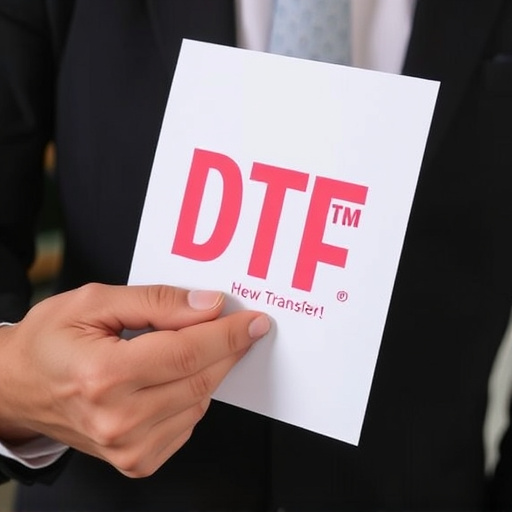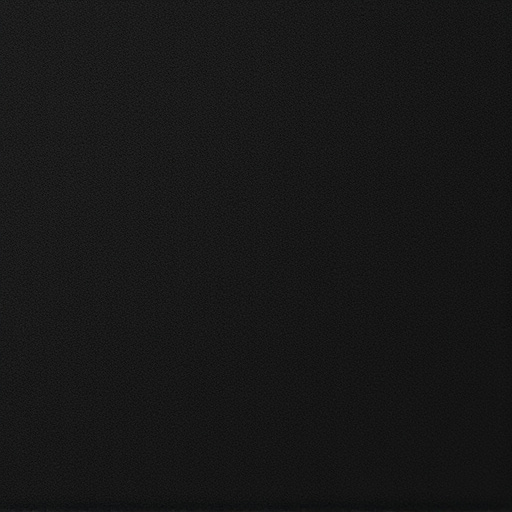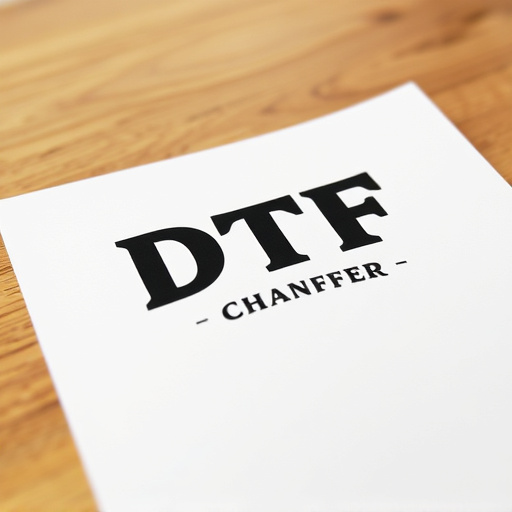Direct-to-Film (DTF) transfers are revolutionizing graphic overlay by printing directly onto adhesive film for seamless application on surfaces like vehicle wraps and signage. This method offers faster times, superior image quality, and ease in creating complex designs compared to traditional techniques. Setting up a dedicated workspace with essential materials is crucial, followed by precise heat control during application to ensure long-lasting, vibrant prints that resist wear. Heat settings, critical for bonding strength, must be tailored to substrate sensitivity and desired outcome, with optimal ranges typically between 350-425°F (175-220°C). Meticulous attention to detail, including proper cleaning, alignment, and gradual cooling, prevents common issues like ink bleeding and wrinkles. Regular equipment maintenance further ensures high-quality DTF prints.
Looking to master the art of applying direct-to-film (DTF) transfers? This comprehensive guide is your roadmap. We’ll walk you through the process, from understanding DTF transfers’ unique benefits to mastering heat settings for flawless application. Learn the science behind the heat process, follow a step-by-step guide, and discover tips to achieve high-quality DTF prints. Optimize your workspace, prepare your materials, and conquer common heat-related issues. Elevate your DTF printing game today!
- Understanding Direct-to-Film (DTF) Transfers: A Brief Overview
- Preparing Your Workspace and Materials for DTF Printing
- Heat Settings: The Science Behind the Process
- Step-by-Step Guide to Applying Optimal Heat Settings for DTF Transfers
- Troubleshooting Common Heat-Related Issues in DTF Printing
- Tips and Best Practices for Achieving High-Quality DTF Prints
Understanding Direct-to-Film (DTF) Transfers: A Brief Overview
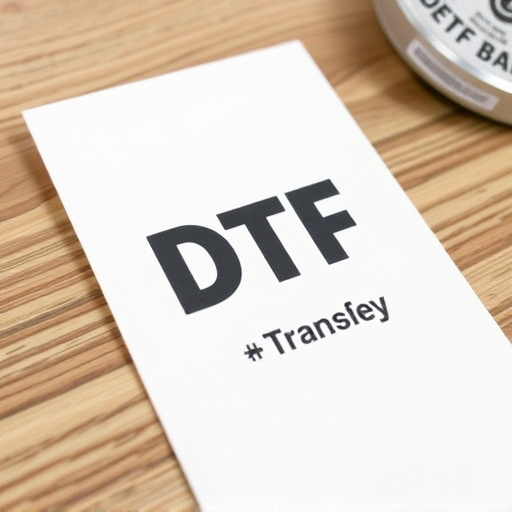
Direct-to-Film (DTF) transfers are a cutting-edge printing technique revolutionizing the way we apply graphic overlays to various surfaces, from vehicle wraps to signage and more. Unlike traditional methods that require separate layers of film and laminates, DTF transfers print directly onto a special adhesive backing, allowing for a seamless and durable finish. This innovative process offers numerous advantages, including faster application times, superior image quality, and the ability to achieve complex designs with ease.
DTF printing involves precise temperature control during the application phase. The heat settings guide you through the process, ensuring optimal adhesion and long-lasting results. By understanding how temperature affects the DTF transfer material and the substrate, users can achieve crisp, vibrant prints that withstand everyday wear and tear. This technology is a game-changer for professionals in the graphics industry, offering efficient, high-quality solutions for direct application to various materials.
Preparing Your Workspace and Materials for DTF Printing
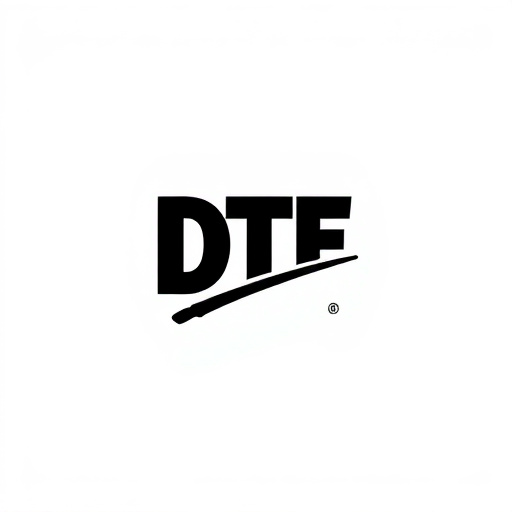
Before beginning your DTF transfer project, setting up a dedicated workspace is essential to ensure a smooth and successful printing process. Gather all necessary materials, including your DTF film, heat press machine, appropriate heat-resistant surfaces, and protective gear like gloves and safety goggles. Create a clean, well-lit area with ample space for your work. Consider using a table or workbench that can accommodate your project size and allows for easy handling of the delicate DTF film.
Organize your supplies nearby to avoid unnecessary interruptions during printing. Ensure proper ventilation in your workspace, as DTF transfers involve high temperatures. Prepare heat-resistant pads or mats to protect your work surface from direct heat transfer. Additionally, have a water source and paper towels ready for any cleaning or cooling processes. With these preparations in place, you’ll be well-equipped to create precise and vibrant DTF prints.
Heat Settings: The Science Behind the Process
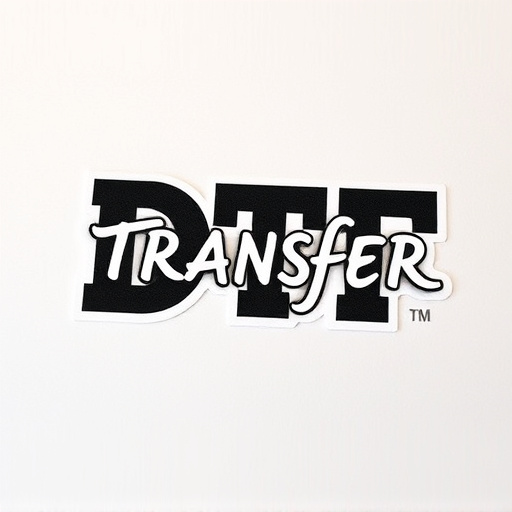
Heat settings play a crucial role in the application of direct-to-film (DTF) transfers, ensuring optimal bonding between the transfer and the substrate. The science behind this process involves careful consideration of various factors such as material composition, surface tension, and viscosity. When applying a DTF transfer, heat is used to activate the adhesive properties of the film, allowing it to melt and fuse with the underlying surface.
The heat settings guide typically includes temperature and pressure parameters that must be precisely controlled. Higher temperatures can accelerate the melting process but may also increase the risk of material degradation or warping, especially with sensitive substrates. Conversely, lower temperatures might take longer, but they offer a safer approach. Pressure is another critical factor, as it ensures good contact between the transfer and the print surface, enhancing adhesive strength and the overall quality of DTF prints.
Step-by-Step Guide to Applying Optimal Heat Settings for DTF Transfers

Applying optimal heat settings for Direct-to-Film (DTF) transfers is crucial for achieving high-quality prints. Here’s a step-by-step guide to ensure success:
1. Preheat Your Printer: Start by preheating your printer to the recommended temperature for DTF printing, usually around 350-400°F (175-205°C). This consistent heat ensures optimal adhesion of the transfer film to your substrate.
2. Select the Right Heat Setting: The ideal heat setting depends on various factors like the type of fabric and the DTF film you’re using. As a general rule, higher heat for thicker films or more robust fabrics is recommended. Refer to your DTF manufacturer’s guidelines for specific settings. For most standard applications, a heat range between 375-425°F (190-220°C) works well. Adjustments can be made based on test prints.
3. Press the Transfer: Once preheated, place your substrate and DTF film inside the printer. Apply pressure evenly across the print area using a suitable press or roller to ensure good contact between the film and fabric. The pressing time should align with your printer’s instructions or recommended guidelines from the DTF film manufacturer.
4. Monitor and Adjust: Keep an eye on the printing process through transparent areas in your printer bed, if available. Carefully watch for signs of underheating (inadequate adhesion) or overheating (melting or discoloration). Adjust heat and pressure settings as needed based on real-time observations.
Troubleshooting Common Heat-Related Issues in DTF Printing
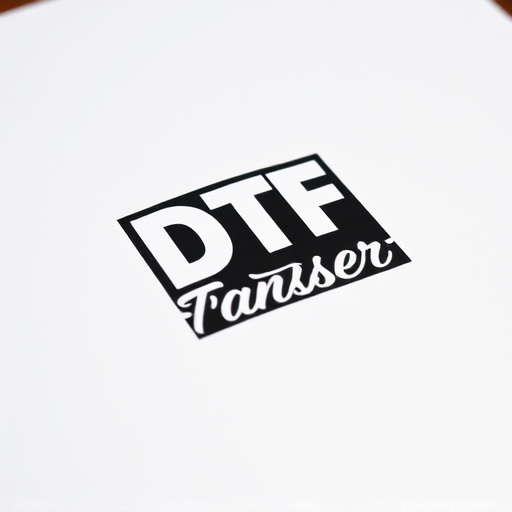
When applying direct-to-film (DTF) transfers, understanding heat settings is crucial for achieving crisp and accurate DTF prints. However, even with precise control, issues can arise due to various factors such as material incompatibilities, improper preparation, or environmental conditions. Common heat-related problems include uneven heating, where certain areas of the film become too hot or not hot enough, leading to ink bleeding or insufficient adhesion. This can often be attributed to incorrect temperature profiles or inadequate preheating.
Another frequent issue is air bubbles and wrinkles, which can distort the final DTF print. These defects are typically caused by rapid cooling or improper pressure application during the heat press process. To mitigate these problems, ensure that your heat press maintains a consistent temperature throughout the print cycle. Additionally, allowing the DTF transfer to cool down gradually after heating can significantly reduce the chances of wrinkles forming. Regular maintenance and calibration of your heat press equipment are also essential to maintaining optimal performance and minimizing heat-related issues with DTF transfers.
Tips and Best Practices for Achieving High-Quality DTF Prints

Achieving high-quality direct-to-film (DTF) transfers requires a keen eye for detail and adherence to best practices. Firstly, ensure your film is clean and free from any debris or fingerprints before application. Using a soft, lint-free cloth to wipe down the surface of the film will help maintain its integrity. Secondly, align the transfer accurately; even a slight misalignment can result in noticeable imperfections. A precise and steady hand, coupled with clear vision, is essential for this step.
Temperature control is paramount during the DTF printing process. Heat settings should be adjusted based on the specific type of film and ink used. General guidelines suggest starting with lower heat levels and gradually increasing until the transfer adheres firmly without causing any cracking or bubbling. Remember, over-application of heat can damage the film or distort the printed image; thus, a delicate balance is crucial for achieving crisp, vibrant DTF prints.






